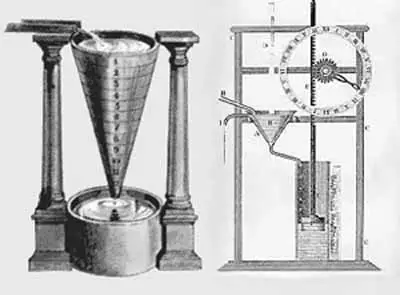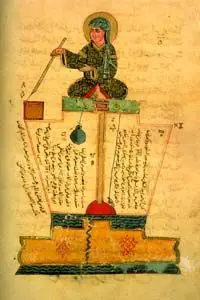The ancient Egypt technology that kept them most organized was definitely their Egyptian clocks. By casting a shadow from a point standing in the path of the sun, the sundial was the original timekeeper in the world. In ancient Egypt, the earliest form of sundial was the obelisk. The length and position of a shadow would determine the time of day. Smaller varied versions were eventually developed, particularly in Greece and Rome.

Types of Egyptian Clocks
Egyptians clocks were much different from ours as well. There were two types of clocks in Ancient Egypt-a water clock and a sundial. A water clock sounds very complicated, but really it’s not. The sundial was basically a circle with numbers written around it with a little stick in the middle. When the stick’s shadow fell at a certain number, it was that time.
For astronomers and priests, time was extremely important and they were responsible for determining the exact hour for the daily rituals and for the important religious festivals. Sundials, which allowed the astronomers and priests to observe the passing of the 12 daylight hours, could not be used to record the 12 night time hours.
 The ancient Egyptian water clock was a dual purpose instrument. It was utilized to tell time and also keep track of how long a person speaks in the courtroom in speeches. Water clocks were among the earliest timekeepers that did not depend on the observation of celestial bodies. Some of these clocks were used to determine hours at night but may have been used in daylight as well.
The ancient Egyptian water clock was a dual purpose instrument. It was utilized to tell time and also keep track of how long a person speaks in the courtroom in speeches. Water clocks were among the earliest timekeepers that did not depend on the observation of celestial bodies. Some of these clocks were used to determine hours at night but may have been used in daylight as well.
 This unique instrument works in a very interesting way because it actually measures time through the water which flows out from a small orifice. The bowl which receives the water has markings to denote hours on each side. They were different types of water clocks in ancient Egypt and this basically measured time-based on the quantity of water in the bowl. Whenever the level of water was altered, the wheel would turn to indicate an hour of the day had passed. This water clock was utilized during the third century and is not in function today.
This unique instrument works in a very interesting way because it actually measures time through the water which flows out from a small orifice. The bowl which receives the water has markings to denote hours on each side. They were different types of water clocks in ancient Egypt and this basically measured time-based on the quantity of water in the bowl. Whenever the level of water was altered, the wheel would turn to indicate an hour of the day had passed. This water clock was utilized during the third century and is not in function today.
The only disadvantage to the water clock was that you had to keep refilling it. One big advantage the water clock had over the sundial was you couldn’t use the sundial at night and the water clock you could. The water clock allowed the ancient Egyptians to economise on the physical mechanism of telling time. The beauty of the water clock was that it was economical in terms of human effort as well as the space it utilized.
